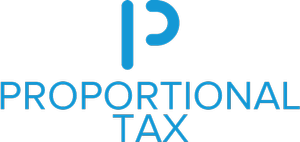Businesses should look at their cash flow on a regular basis to ensure they have enough money to meet both short- and long-term financial goals. This analysis should include tracking accounts receivable from clients and due payments to suppliers.
While profits on the income statement are a great indicator of business success, you need cash to keep your doors open. This is why cash flow analysis is so important.
Financial Forecasting
When it comes to business, there are many moving parts. One of the most important components is accounting and cash flow. In fact, 60% of failed small- and mid-sized businesses cited poor cash flow management as the reason for their failure. To avoid running a business into the red, successful entrepreneurs must stay on top of their numbers through the use of intelligent forecasting techniques and systems.
Start by calculating your company’s current assets (cash and near-cash assets, such as accounts receivable) minus current liabilities. This is your working capital.
Next, calculate your cash flow from investing activities by adding any losses from selling marketable securities or long-term investments and subtracting profits. Finally, calculate your company’s financing activities by finding the amount of money moved between a business and its owners, investors or creditors, such as repayment of debt or buying or selling stock. Include any dividend payments in this number as well. Then add up these three categories to find your company’s net operating cash flow.
Cash Flow Forecasting
Unlike budgets, cash flow forecasts clearly identify inflows and outflows of actual money. They’re also updated on a regular basis (usually monthly or quarterly). When creating a cash flow forecast, you need to first define the liquidity accounts that you want to track through the process. Typically, these are the main accounts that receive or disperse money on a bank account level.
This includes subscription recurring revenue, one-time sales, and even new funding for growth investments. It may also include money that you’re collecting in the form of taxes from customers.
Some companies owe money to vendors or lenders for the products and services they provide, which shows up in the cash from accounts receivable row of a cash flow forecast. Cash flow analysis often highlights when a business will run low on cash and indicate whether it’s prudent to obtain additional financing or reduce expenses. It’s also a good way to make sure you adhere to debt covenants if you have loan contracts in place.
Liquidity Forecasting
A liquidity forecast is a detailed plan of action that addresses potential funding crisis scenarios. This type of analysis should be based on conservative assumptions for both cash receipts and disbursements. It should be updated frequently and a contingency funding plan should be established.
Liquidity is the amount of money a business has available to run its operations and complete transactions. It’s calculated as current assets (cash and near-cash assets, like notes receivable) minus current liabilities (expenses payable and accrued expenses).
The first step in preparing a liquidity forecast is to define the main accounts that will be tracked through cash flow analysis. This can be done on the General ledger work center page. Once these are identified, the treasury team can prepare the liquidity forecast. In the Liquidity Forecasts view, the expected cash balance for ninety business days is displayed. If you want to see a more granular view of the forecast, select a line item and then choose Liquidity Forecast – Transaction Details.
Budgeting
Cash flow analysis determines where a company’s cash is coming in and going out. This includes both recurring and non-recurring transactions like sales, payments to employees, expenses and taxes. It also includes financing activities like funding rounds, loan repayments and issuance of stock. Operating cash flow is the total amount of money a business receives from customers less annual, recurring expenses. Investing activities reflect funds spent on fixed assets and financial instruments like stocks and bonds. Financing activities show cash coming in and out of the company from its owners, investors and creditors such as debt and equity funding rounds and dividend payments.
Savvy business leaders, investors and executives review these data points regularly to ensure a company is on track to meet short- and long-term budget objectives. Mosaic makes this process easier by allowing business leaders to pull ERP and CRM data in real-time so they can make informed decisions faster. This gives them more runway to adjust spending or scale their operations.

